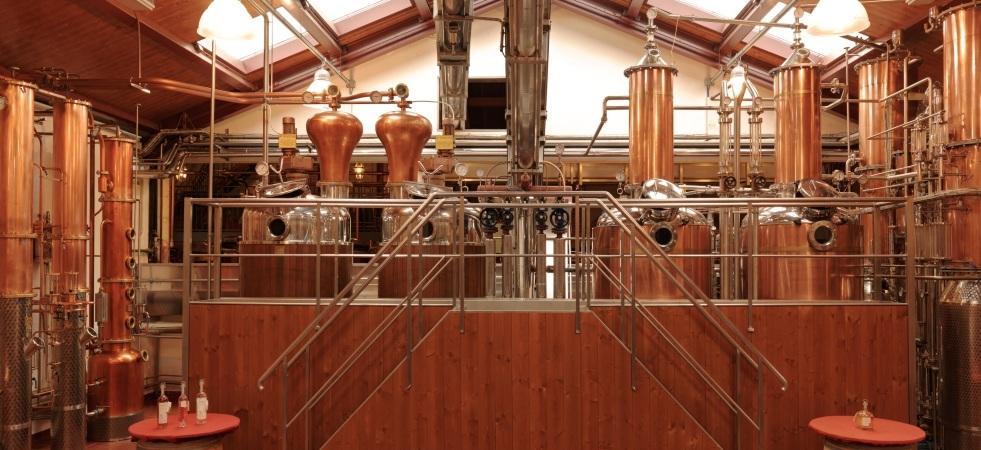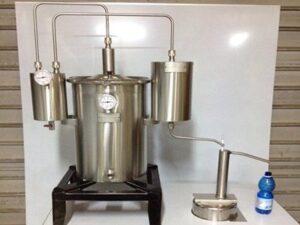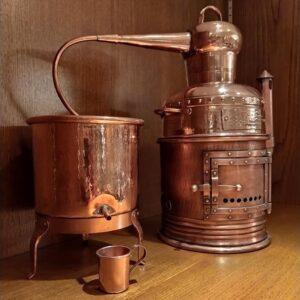
The stills
The use of copper or steel stills in the distillation is linked to the chemical and thermal properties of these metals. In fact, copper has the property of reacting with some substances present in the liquids to be distilled, such as sulfuric acid, forming soluble compounds which are eliminated during distillation. Additionally, copper has low thermal conductivity, which means it heats up more slowly and evenly than other metals such as steel. This is useful to avoid the formation of too hot areas, which could cause the decomposition of the alcohols present in the liquid to be distilled.
Steel, on the other hand, is much stronger and more durable than copper, and it doesn't react with acids. However, being a more conductive metal, it can cause the liquid to heat more rapidly and unevenly, which may be less suitable for the distillation of delicate alcohols.

The Alembics
In general, the use of copper stills is preferable for the distillation of delicate liquids, such as wines or fruit brandies, while steel may be more suitable for the distillation of more robust liquids such as grain brandies.

The Alembics
Stills have been used for distillation since ancient times. The first known stills were used in Mesopotamia and Egypt, around the 4th century BC, for the production of perfumes and medicines. In the Middle Ages, alchemists used stills for the production of elixirs and for the transformation of metals into gold.
During the Renaissance, alembics also began to be used for the production of ethyl alcohol. In Europe, copper stills were the most common and were used both for the distillation of wines and fruit, and for the production of spirits and gin.
With the advent of the alcohol industry in the late 1700s and early 1800s, stills began to be mass-produced and became increasingly larger and more sophisticated. In America, copper stills were used extensively in the production of whiskey during the so-called "whiskey era" of the 19th century.
Micro-distilleries, the phenomenon to keep an eye on in the coming years
Modern stills are generally made of stainless steel, a material that is more resistant and easier to clean than copper, and are often equipped with automatic controls for temperature and pressure.
The use of do-it-yourself stills for the distillation of alcohol can involve various risks and dangers.
First, ethyl alcohol is highly flammable, so there is always a risk of fire during distillation. It is therefore important to use stills and equipment that are in good condition and that have been specially designed for distillation.
The rotary evaporator and the process of evaporating chemicals
Also, ethyl alcohol can be dangerous if inhaled in large quantities. During distillation, the alcohol is vaporized and can therefore be easily inhaled. It is therefore important to use adequate ventilation and wear a protective mask to avoid inhaling too much alcohol.
Additionally, home distillation of alcohol may be illegal in some areas and may violate local and federal laws on the manufacture and sale of alcohol. Additionally, home-made alcohol may not be safe for human consumption due to possible contamination or improper distillation.
In general, it's important to be aware of the risks and laws surrounding home distillation of alcohol, and to use proper equipment and techniques to ensure the safety and quality of the final product.







